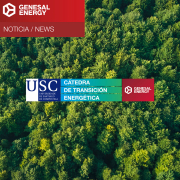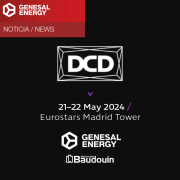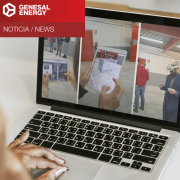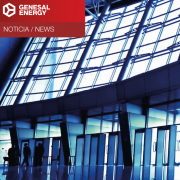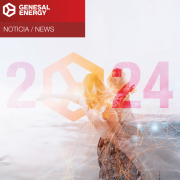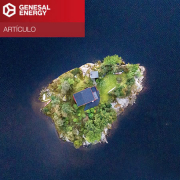Genesal Energy takes part on the 17th DCD Connect Madrid
/in Communication, News/by genesalGenesal Energy takes part on the 17th DCD Connect Madrid This forum will bring together more than 1,400 leading national and international professionals from the data centre sector for two intense days. Genesal Energy will attend the 17th edition of the prestigious DCD Connect Madrid event, scheduled for 21st and 22nd of May in Madrid. […]
Genesal Energy launches an Augmented Reality mobile app to visualise our generator sets ‘in situ’.
/in Communication, News/by creativoMás Campos de Proyectos
/by creativoa:8:{s:8:”location”;a:1:{i:0;a:1:{i:0;a:3:{s:5:”param”;s:13:”post_taxonomy”;s:8:”operator”;s:2:”==”;s:5:”value”;s:21:”category:case-studies”;}}}s:8:”position”;s:4:”side”;s:5:”style”;s:7:”default”;s:15:”label_placement”;s:3:”top”;s:21:”instruction_placement”;s:5:”label”;s:14:”hide_on_screen”;s:0:””;s:11:”description”;s:0:””;s:12:”show_in_rest”;i:0;}
Genesal Energy participates in Data Centre World London, Europe’s leading trade fair specialising in data centres.
/in News/by creativoContact
Do you need a generator set?
Fill in the form with your information if you want one of our generator sets or if you have any questions. We will prepare a quotation for you based on you requirements.

Customer Service Telephone/Fax:
+34 900 730 124Customer service team Email
consultas@genesal.comGENESAL ENERGY
INTERNATIONAL
We operate in over 30 countries worldwide.
EUROPE | AFRICA | LATIN AMERICA | MIDDLE EAST
R&D+i
GENERATOR SETS
- Diesel Generator Sets
- Gas Generator Sets
- Hybrid Generator Sets
- Stage V Generator Sets
- REQUEST A QUOTE
CERTIFICATIONS






COMUNICATION

Parroquia de Rois, b28
Polígono Industrial de Bergondo 15165
Bergondo, A Coruña
consultas@genesal.com
EEE Producer Registration Number EE 7087
Members of

